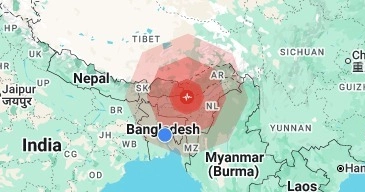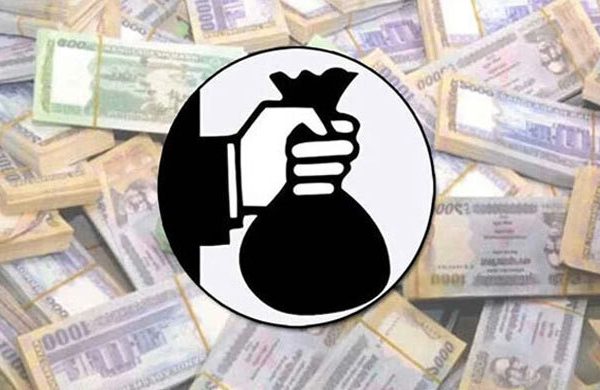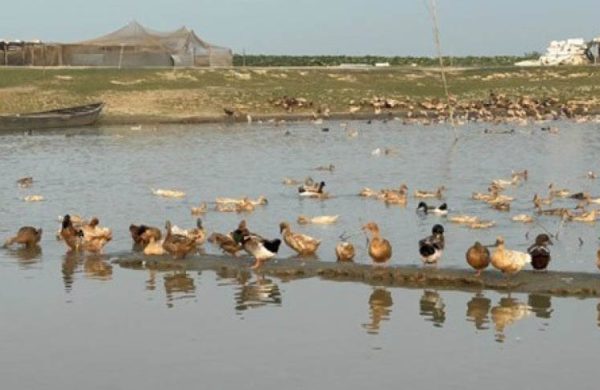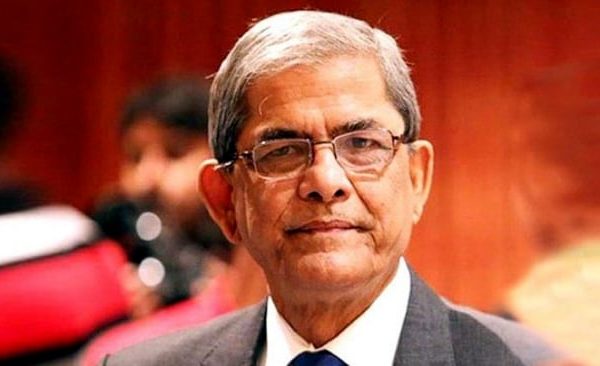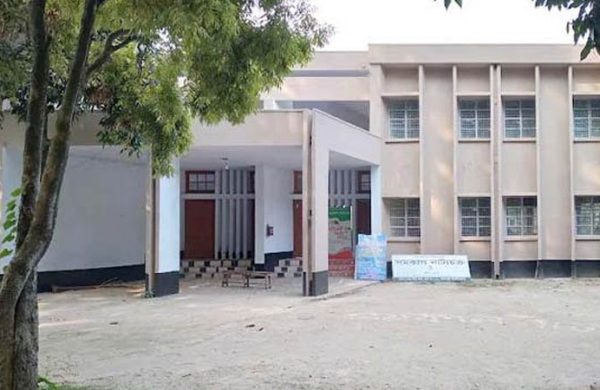Private sector loan growth in Bangladesh falls to lowest in a decade
- Update Time : Tuesday, April 29, 2025

Staff Correspondent:
According to the latest data from Bangladesh Bank, private sector loan growth dropped to just 6.82% in February, compared to 10.13% during the same period last year.
Experts state that high interest rates, reluctance to invest, and a contraction in import expenditures are the main reasons behind the slowdown. Currently, bank loan interest rates range between 15-16%, discouraging businesses from making new investments.
A year ago, the rates were around 11-12%. Bangladesh Bank has kept the policy interest rate around 10% to control inflation, which has impacted borrowing costs. This has also affected imports of capital machinery. In the first eight months of the current fiscal year, such imports have declined by nearly 30%.
Additionally, LC (Letter of Credit) settlements during this time have fallen by 25.22%. By February, LCs for capital machinery imports were opened worth only $1.15 billion.
Regarding this, Dr Mostafizur Rahman, distinguished fellow at the Centre for Policy Dialogue (CPD), believes that the decline in capital machinery imports is not a good sign for the economy.
He said: “Capital machinery is essential for establishing industries. However, its imports have been declining for several years, leading to private sector loan growth falling below 7%.”
He further mentioned, “Amid various disruptions in the first half of the fiscal year, investments declined. However, remittance flows and a liberal import policy offer potential for economic recovery.”
On this topic, Mohammad Ali, managing director of Pubali Bank, said: “The demand for loans has decreased due to the fall in capital machinery imports. Additionally, political uncertainty is making investors hesitant to embark on new projects.”
STAGNANT INVESTMENT PUTS EMPLOYMENT IN QUESTION
Economists are warning that it is now crucial to increase investment and revive the flow of credit. Otherwise, the employment situation could deteriorate further. Each year, 2-2.2 million young individuals enter the labor market, but only 1.4-1.5 million new jobs are being created.
According to Bangladesh Bureau of Statistics (BBS), although the official number of unemployed people stands at 2.7 million, analysts suggest that the real figure has surpassed 10 million.
A recent World Bank report expresses concern that due to the employment crisis and inflationary pressures, Bangladesh’s poverty rate could reach 22.9% and extreme poverty could reach 9.3% by 2025.
The report also mentions that nearly 4% of workers lost their jobs in the second half of 2024. Wages for low-skilled workers fell by 2%, while wages for highly skilled workers dropped by 0.5%.
Real wages in the country have been steadily declining for 40 consecutive months. As a result, three out of every five families are breaking into their savings to cover daily expenses. Moreover, the country’s labor market remains heavily reliant on the informal and low-productivity sectors.
A large number of people are engaged in insecure employment, leading to growing income inequality, which signals an alarming imbalance in the socio-economic structure.
RECORD LOW IN LOAN GROWTH
Private sector credit is a major driver of Bangladesh’s economic growth. It plays a vital role in setting up industries, boosting production, initiating new ventures, and creating jobs.
However, private sector loan growth has been declining for several months. In February, it fell to just 6.82%. In the previous month, January, the growth was 7.15%.
While private sector credit growth was 10.13% in July 2024, it fell to 9.86% in August. It continued a downward trend through February, reaching the 6% range.
Despite this, Bangladesh Bank is pursuing a policy of tightening money supply to control inflation. Bangladesh Bank Governor Dr Ahsan H Mansur has stated that the policy rate will remain at 10% until inflation decreases.
Consequently, banks’ repo rates have also increased, raising their funding costs, which has impacted lending interest rates.
The target for private sector loan growth for the first half of the current fiscal year was reduced from 10% to 9.80%. In reality, growth has fallen even below this target.
Regarding this, Syed Mahbubur Rahman, managing director of Mutual Trust Bank, “Private sector loan growth has dropped to 6%, and capital machinery imports have fallen by 30%, which is concerning for the economy.”
He added: “The decline in private sector loan growth is due to a lack of interest from entrepreneurs in making new investments and the failure to achieve monetary policy targets.”
WHAT ARE THE EFFECTS?
- Employment Crisis: Every year, an average of 2-2.2 million new people enter the labor market. However, currently, only 1.4-1.5 million new jobs are being created annually. Thus, every year 600,000 to 800,000 new unemployed individuals are being added. Experts warn that the actual number of unemployed people has already approached 10 million.
- Rising Poverty: According to the World Bank, Bangladesh’s poverty rate could rise to 22.9% by 2025. The main reasons identified are the employment crisis and high inflation.
- Economic Growth at Risk: If the trend of low investment continues, it will become difficult to achieve Bangladesh’s GDP growth targets in the coming years. Consequently, the plans for graduating to a middle-income country and achieving the Sustainable Development Goals (SDGs) may be hindered.
Business organizations claim that operating industries under the current interest rates has become challenging. Banks are also hesitant to issue new loans citing higher risks.
In this regard, Mohammad Hatem, president of the Bangladesh Knitwear Manufacturers and Exporters Association (BKMEA), said: “The interest rate on loans for my organization has risen to 16-17%. If rates continue to rise like this, repaying loan installments will become difficult, let alone repaying the principal. The current situation could lead to a rise in default loans and a decrease in new employment opportunities.”
FIVE BARRIERS TO INVESTMENT
According to the International Finance Corporation (IFC), Bangladesh’s private investment volume is lower than that of other South Asian countries, due to five major barriers:
- Power supply issues
- Limited financing
- Corruption
- Dominance of the informal sector
- High tax rates
According to data from the United Nations Conference on Trade and Development (UNCTAD), Foreign Direct Investment (FDI) in Bangladesh fell by about 14% in 2023, down to $3 billion.
The IFC report also points out that private investment in Bangladesh is inadequate relative to GDP, constituting a major obstacle to economic growth.
There is potential for creating at least 3.5 million jobs annually in sectors like housing, garment manufacturing, digital financial services, and the paint and dye industry if appropriate investments are made.
DOMESTIC INVESTMENT: THE KEY TO EMPLOYMENT
Domestic investment is the main driver of employment in Bangladesh’s economy. There is no alternative to increasing investment to boost production and generate jobs. Statistics show that domestic investment plays a far greater role in employment creation than foreign investment. However, policymakers tend to place greater emphasis on attracting foreign investment.
THIS RAISES A CRITICAL QUESTION: HOW WILL EMPLOYMENT INCREASE?
Analysis of data from Bangladesh Investment Development Authority (BIDA) shows that from fiscal year 2009-10 to 2020-21, domestic investments of $10,575 billion created about 2.8 million jobs. In contrast, foreign investments of $5,943 billion created only about 545,000 jobs.
According to the calculations, it costs around $37,000 to create one job through domestic investment, whereas foreign investment requires almost two and a half times more—about $93,000.
Analysts suggest that domestic investors are deeply integrated into the local economy. Their profits are reinvested within the country, fostering the growth of auxiliary industries and creating sustainable employment.
However, foreign investors often repatriate a large portion of their profits, leading to lower durability and quantity of employment.
Nevertheless, the need for foreign investment cannot be denied. Through foreign investment, Bangladesh can gain access to advanced technologies, technical expertise, export markets, and infrastructure development.
Yet the reality shows that FDI in Bangladesh is not increasing. In the first six months of the current fiscal year, net FDI dropped by 71% compared to the previous year.
WHAT NEEDS TO BE DONE
Experts argue that to overcome the current situation, it is urgently necessary to create an investment-friendly environment. At the same time, policy steps must be taken to ensure easy and affordable access to loans.
They suggest providing low-interest loans for domestic investors, improving infrastructure, resolving gas and electricity issues, ensuring policy consistency, and maintaining political stability.


